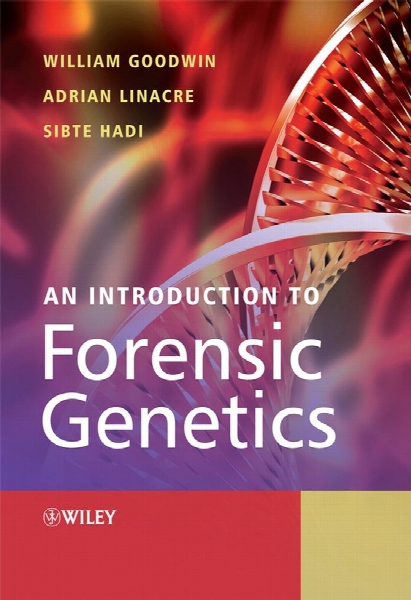An introduction to forensic genetics
- نوع فایل : کتاب
- زبان : انگلیسی
- مؤلف : William Goodwin; Andrew Linacre; Sibte Hadi
- ناشر : Hoboken, N.J. : Wiley ; Chichester : John Wiley
- چاپ و سال / کشور: 2007
- شابک / ISBN : 9780470010259
Description
Contents. Preface. 1 Introduction to forensic genetics. Forensic genetics. A brief history of forensic genetics. References. 2 DNA structure and the genome. DNA structure. Organization of DNA into chromosomes. The structure of the human genome. Genetic diversity of modern humans. The genome and forensic genetics. Tandem repeats. Single nucleotide polymorphisms. Further reading. References. 3 Biological material - collection, characterization and storage. Sources of biological evidence. Collection and handling of material at the crime scene. Identification and characterization of biological evidence. Evidence collection. Sexual and physical assault. Presumptive testing. Storage of biological material. References. 4 DNA extraction and quantification. DNA extraction. DNA extraction from challenging samples. Quantification of DNA. DNA IQTM system. References. 5-The polymerase chain reaction. The evolution of PCR-based profiling in forensic genetics. DNA replication - the basis of the PCR. The components of PCR. The PCR process. PCR inhibition. Sensitivity and contamination. The PCR laboratory. Further reading. References. 6 The analysis of short tandem repeats. Structure of STR loci. The development of STR multiplexes. Detection of STR polymorphisms. Interpretation of STR profiles. Further reading. References. 7-Assessment of STR profiles. Stutter peaks. Split peaks (+/- A). Pull-up. Template DNA. Overloaded profiles. Low copy number DNA. Peak balance. Mixtures. Degraded DNA. References. 8 Statistical interpretation of STR profiles. Population genetics. Deviation from the Hardy-Weinberg equilibrium. Statistical tests to determine deviation from the Hardy-Weinberg equilibrium. Estimating the frequencies of STR profiles. Corrections to allele frequency databases. Which population frequency database should be used? Conclusions. Further reading. References. 9 The evaluation and presentation of DNA evidence. Hierarchies of propositions. Likelihood ratios. Two fallacies. Comparison of three approaches. Further reading. References. 10 Databases of DNA profiles. The UK national DNA Database. International situation. Useful web sites. References. 11 Kinship testing. Paternity testing. Identification of human remains. Further reading. References. 12 Single nucleotide polymorphisms. SNPs - occurrence and structure. Detection of SNPs. SNP detection for forensic applications. Forensic applications of SNPs. SNPs compared to STR loci. Further reading. References. 13 Lineage markers. Mitochondria. Applications of mtDNA profiling. The Y chromosome. Forensic applications of Y chromosome polymorphisms. Further reading. Useful web sites. Appendix 1 Forensic parameters. Appendix 2 Useful web links. Glossary. Abbreviations. Index.
This reference now not only examines the process of DNA profiling from the collection of evidence at the scene of a crime, but it also describes the presentation of that evidence in a legal context.


